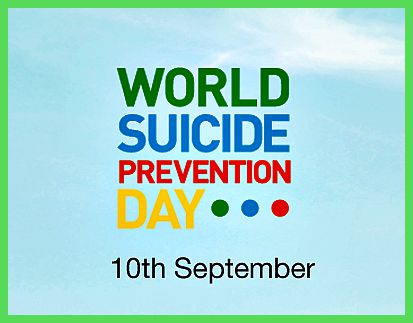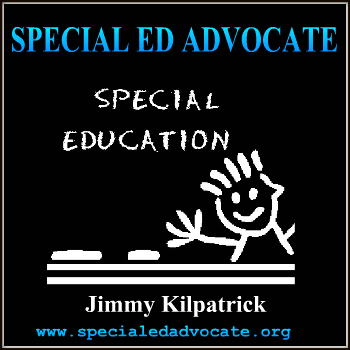Reading Bear is a fun way to learn to read.
We teach over 1,200 vocabulary items. Our 50 presentations cover all the main phonics rules. All free and nonprofit!
Reading Bear now has a full set of fifty presentations, with an average viewing time of about 15 minutes each. I haven’t added up the time, but it’s around 12 hours total. It covers a huge number of phonics principles, systematically. Over 1,200 words are pronounced at four speeds, illustrated with a picture, and finally used (often, defined) in a sentence which is itself illustrated with a video. All words are clickable and sounded out. All phonetic words (i.e., the vast majority) are displayed “karaoke” style, with individual letters or letter clusters flashing at the precise moment that the corresponding sound is spoken.
Every second, literally, of those 12 hours was carefully edited: word lists sifted, sentences written and rewritten, word markup crafted (so the words are broken up according to the phonics rules that Reading Bear teaches), pictures and videos painstakingly selected, voiceover done professionally, all media laboriously edited and if necessary re-edited, pronunciation dictionary entries created, then everything put together and edited on the website. It was a lot of work.
Does that mean Reading Bear is complex and forbidding? Of course not! Even though it is feature-rich, it is extremely easy to use and fun for kids. Really!
If I could have produced a better resource for teaching reading in the same time and with the same resources, I would have. This is the best I could do.
It’s a gargantuan resource, and it is all absolutely free! Not just free, either, but non-profit and ad-free. I’ve worked on this project for over a year and a half, with the help of dozens of people. We’ve spent a lot of money on it–or rather, a certain anonymous benefactor from the Memphis area has spent a lot of money on it. My ongoing deep thanks to that gentleman. The images were generously donated by Shutterstock, and we got the videos either free or at a discount. For this I’d like to thank Shutterstock co-founder Adam Riggs. Other main players in its development were a group of volunteers, Business Edge for the software, the great Melissa Moats for voiceover, Columbus-based Cybervation for production, the Community Foundation of Northwest Mississippi for funding, and of course WatchKnowLearn is our parent organization and chief promoter.
Why Reading Bear works
What’s so great about Reading Bear, anyway? We’ve gotten excellent reviews and many fans among teachers, homeschoolers, and of course kids. So why does it work?
The way I see it, phonics is pretty simple. It’s just a matter of practice. To read phonetically, you don’tneed to learn the jargon and symbols used by reading specialists. You just need lots of clear examples, attractively presented. Reading Bear does that. Each presentation shows 25 words (on average) sounded out or read at four different speeds. That lets the child understand quickly and easily how each word is constructed.
But reading isn’t just decoding. It is also getting meaning. That’s why, after breaking down the word and its sounds, Reading Bear shows a picture specially chosen to teach the meaning of the word. Then the word is used in a very basic sentence, either a definition or some basic fact about the concept, and the sentence is illustrated with a 5-second video. So the student sees the word written and spoken, both by itself and in a sentence, and gets the word’s meaning simply and attractively from multimedia.
Reading Bear is also fun. The bare description of it might sound dry, but I challenge you to sit any beginning reader in front of the program and observe the results. Kids love it. Why do they love it? It’s everything. They love the way the letter flashing clarifies letter sounds. They love the pictures, of course, and the simple sentences and videos. The whole thing makes sense of language. Kids love to learn, and I think that with Reading Bear, and they can sense that they’re really learning. They love the “aha!” moment, and that’s what Reading Bear delivers, over and over.
One way that Reading Bear makes sense of language is a feature that few other programs have. It matches up letter sounds to individual letters, karaoke style, for every piece of text in the program. We didn’t take the easy way out and match up whole words or syllables. We put in hours and hours matching up the audio with individual letters or letter combinations (if the combinations are taught by Reading Bear). And not only are the words read out that way automatically. If you want to focus on a word and see how it is broken down phonetically, you can also click on it and we’ll show a pronunciation from our hand-made 2700+ entry pronunciation dictionary. What other reading program can say that?
Reading Bear challenges students to do only what they’re ready to do. It goes in steps. At first, it’s useful just to see how words are broken down. We have a step for that (passive learning). Then they should repeat quickly what the presentation says slowly. We have a step for that (repeating). Then the student be able to say a word after it is sounded out. We have a step for that (blending). Finally, with practice, the student should be able to sound out a word for himself and blend it. We have a step for that (reading). Finally, you can take an online quiz, which is automatically generated each time you click the quiz button and, believe it or not, it’s rather fun.
This whole procedure very efficient. The student has to do just a simple thing, when ready: watch, repeat, blend, and finally read. Everything else about the program reinforces meaning.
Finally, you might wonder how Reading Bear stacks up against some other reading programs. Here are a few notes:
- Starfall is great, and it certainly has its place (even in my home). But Starfall simply isn’t as complete in its coverage of phonics as Reading Bear is. It also doesn’t teach vocabulary. You won’t find the carefully-chosen photos, definitions, and videos that open children’s eyes to language. Finally, it breaks down only some of the words. Every phonetic word is broken down by Reading Bear, and you can choose to have sentences read to you or to read them yourself. I think of Reading Bear as unlocking the mysteries of language efficiently and attractively, whereas Starfall is a supplement.
- Literactive is another of my favorites, and for us was as useful as Starfall. In fact, I will be honest and admit that it is one of Reading Bear’s inspirations. While it does break down words rather better than Starfall does, and does read whole words while highlighting them, Reading Bear does these things better. Literactive also does not teach phonics systematically–its readers are wonderful, but the actual phonics instruction will have to come from elsewhere.
- Finally, I won’t list them, but there are zillions of programs out there that I think of as simply digital worksheets or games. They’re marginally more interesting than paper worksheets, but in my opinion, they don’t teach nearly as efficiently, and are much more tiresome, than Reading Bear. Reading Bear isn’t a video game, but it’s still fun. When you get to the end of those programs, you’ve won a game. When you get to the end of Reading Bear, you can read.
There is nothing like Reading Bear at any price. Even if you don’t use it as the main tool in your classroom, you can use it as a supplement, and enjoy the results. Try it out. Once you see how your students love it and learn from it, you’ll be using it a lot.
via Reading Bear – learn to read for free!.
Related posts:
- Reading Bear, the free phonics tutorial Reading Bear, a project of WatchKnowLearn.org, is the first free…
- READ CONMIGO HELPS HOUSTON FAMILIES LEARN THE POWER OF READING AT HOUSTON CHILDREN’S FESTIVAL – New bilingual literacy campaign from Infinity Insurance has distributed…
- Brain scans could diagnose dyslexia in children before they even learn to read and head off difficulties at school Some children with dyslexia go undiagnosed for years, leading to…
- PARENTS: KEEP YOUR KIDS READING ALL SUMMER WITH READ CONMIGO’S TOP-TEN TIPS AND WIN A KINDLE FIRE FOR THE FAMILY – Infinity Auto Insurance’s Bilingual Reading Campaign Launches Summer Reading…
- Gaithersburg school says no homework — just free reading By Jay Mathews – Two years ago in a column…
- Children’s literacy is enhanced by free choice reading Duncan McDougall – Summer is a magical season for kids…
- Denny’s restaurants defends right to bear arms! Ad claims 2nd Amendment key to what makes this nation…
- Polar bear mauls to death British tourist in Norway An Eton schoolboy sleeping in a tent was…
- Reading a book really is better the second time round – and re-reading can offer mental health benefits Can offer mental health benefits, say researchers Reading a favourite…
- New knowledge on reading revealed Research shows phonics not always the best reading tonic Ground-breaking…

















